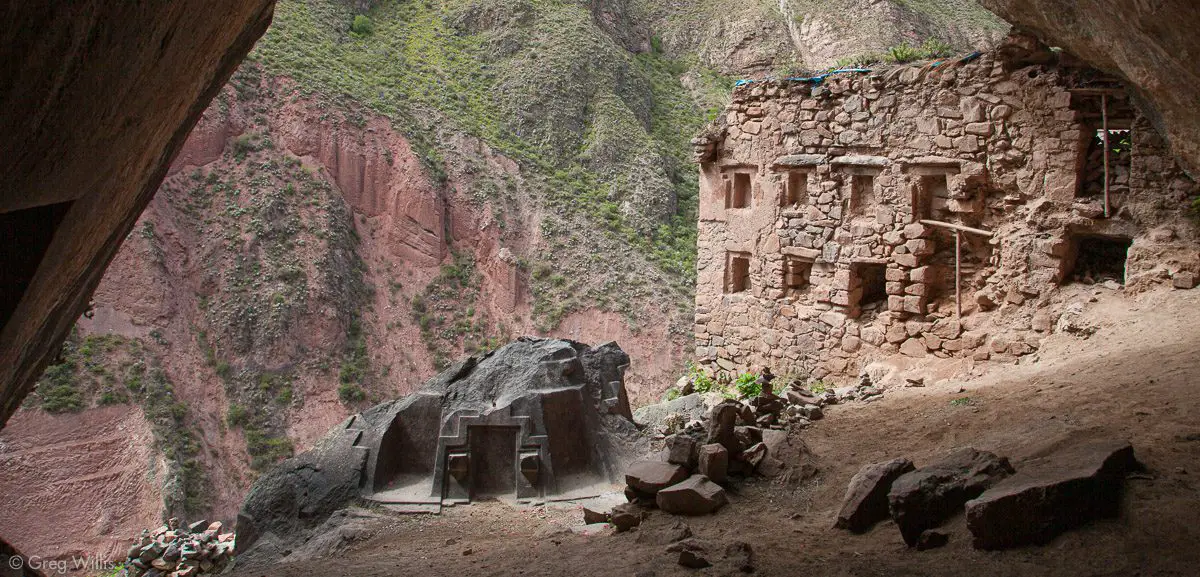Choquequilla, also called Ñaupa Iglesia, is an Inca huaca shrine, constructed within a cave opening near the present-day village of Pachar in the Sacred Valley of Peru.
In Inca society, a huaca or wak’a, was a sacred monument built along a processional ceremonial line or route. Inca emperors felt it their right to improve upon nature by sculpting in situ outcrops that often became huacas.
The Inca also believed that natural caves connected them with the underworld and their ancestors, serving as conduits to reach the gods, or were associated with Inca origin myths and ritual emergence.
The Choquequilla huaca was constructed where two relatively flat stone faces form an inverted ‘V’ in the cave roof, that during the December solstice sunrise illuminates the cave interior.
An intricately carved shrine made from black granite faces inward toward the cave, that closely resembles the Baño de la Ñusta (meaning “Bath of the Princess”) at nearby Ollantaytambo (although the Choquequilla altar has been badly damaged by looters).
When observed from the outside, it has a natural appearance, but the interior face suggests an important ceremonial purpose. This is flanked by a wall containing two rows of four double jamb niches, whilst on the opposite side of the cave is a large double jamb window.
Researchers have called the site, “the cave of Choqequilla, the Golden Moon”, and the “Moon Temple of Choquequilla”, suggesting the site has a lunar connection (which is illuminated by moonlight at night), although the exact purpose of the shrine is still speculated.
Header Image Credit: Greg Willis – CC BY-SA 4.0
